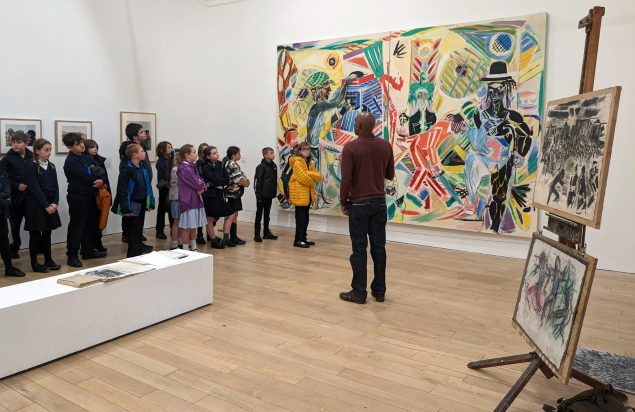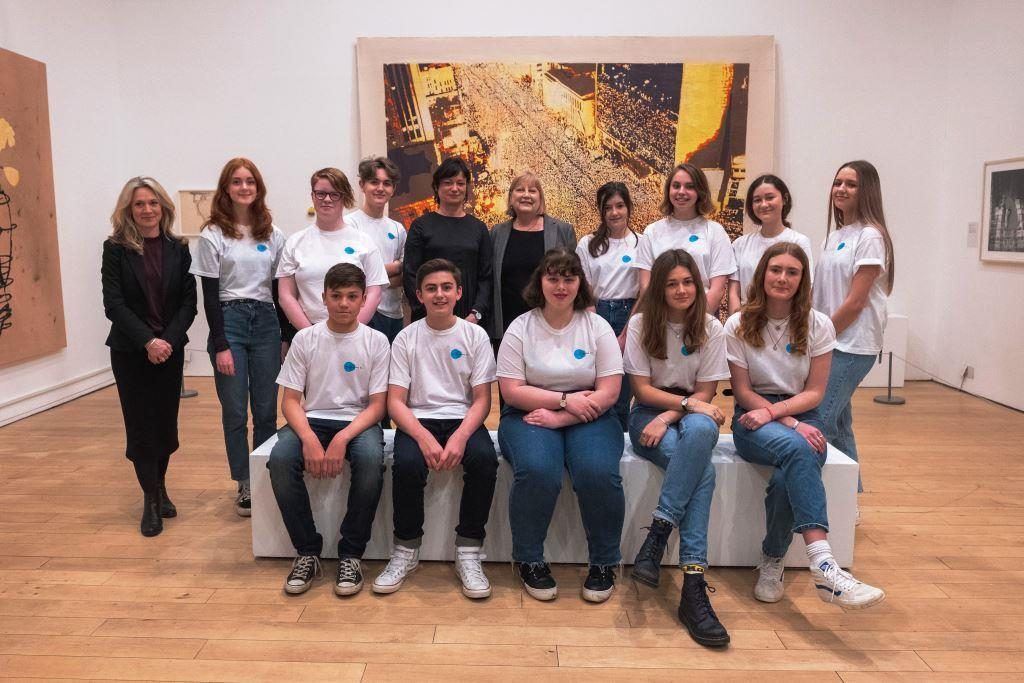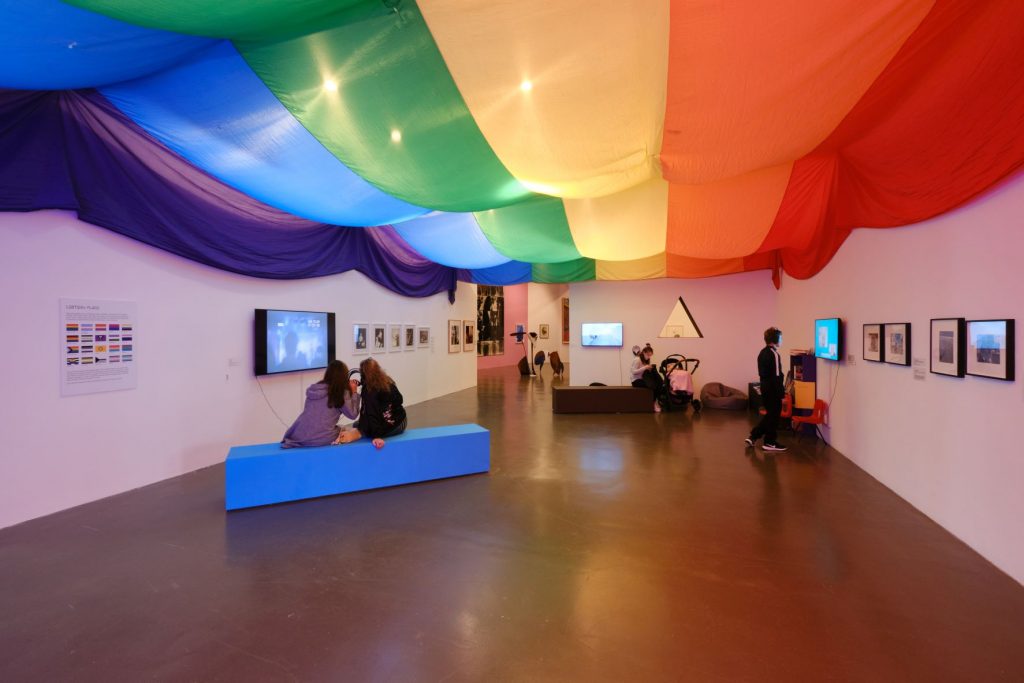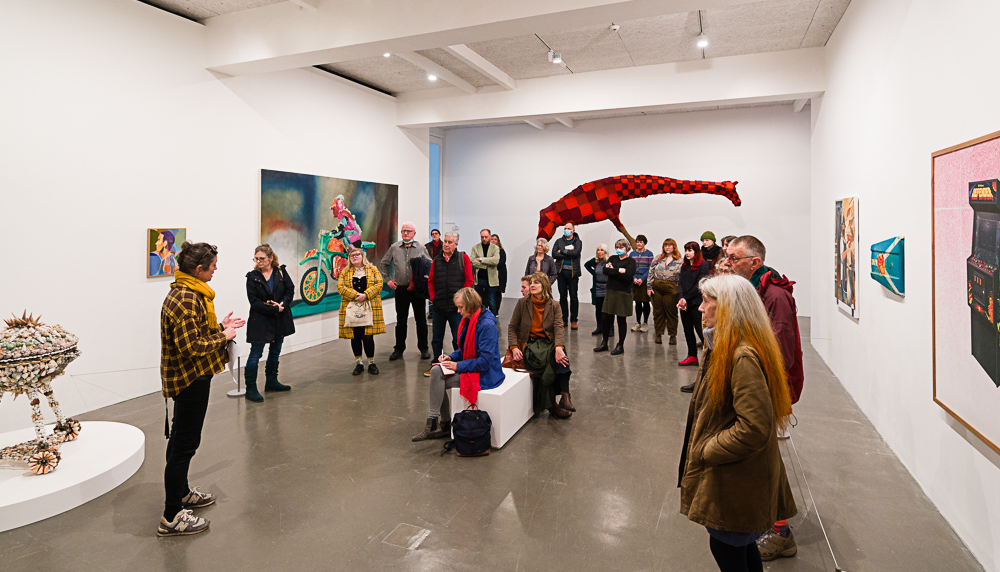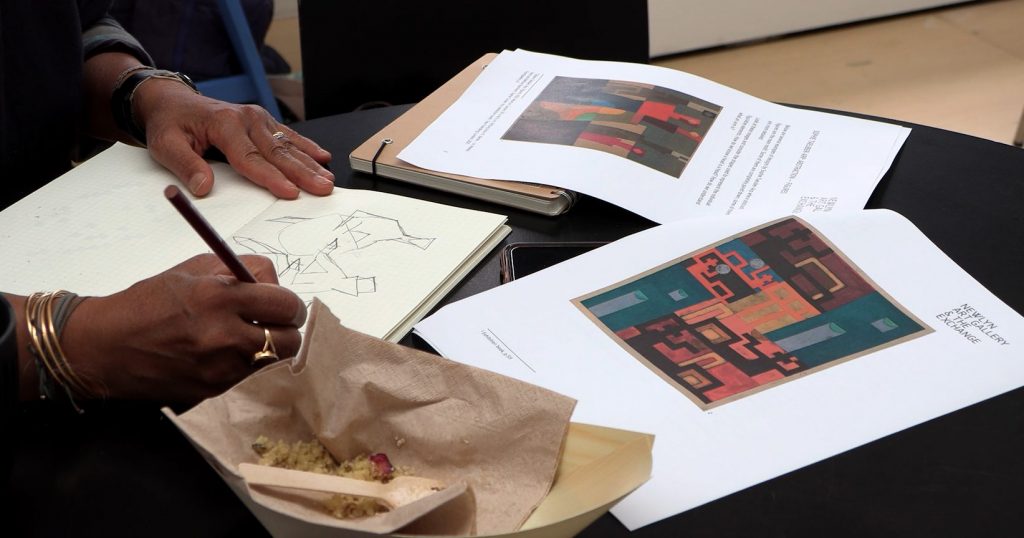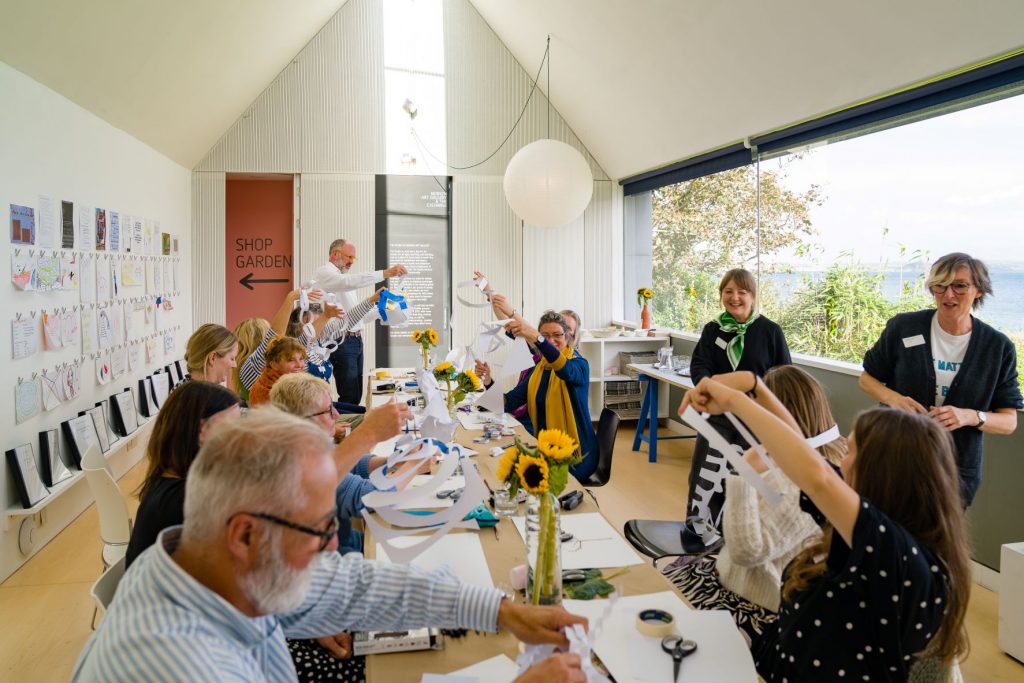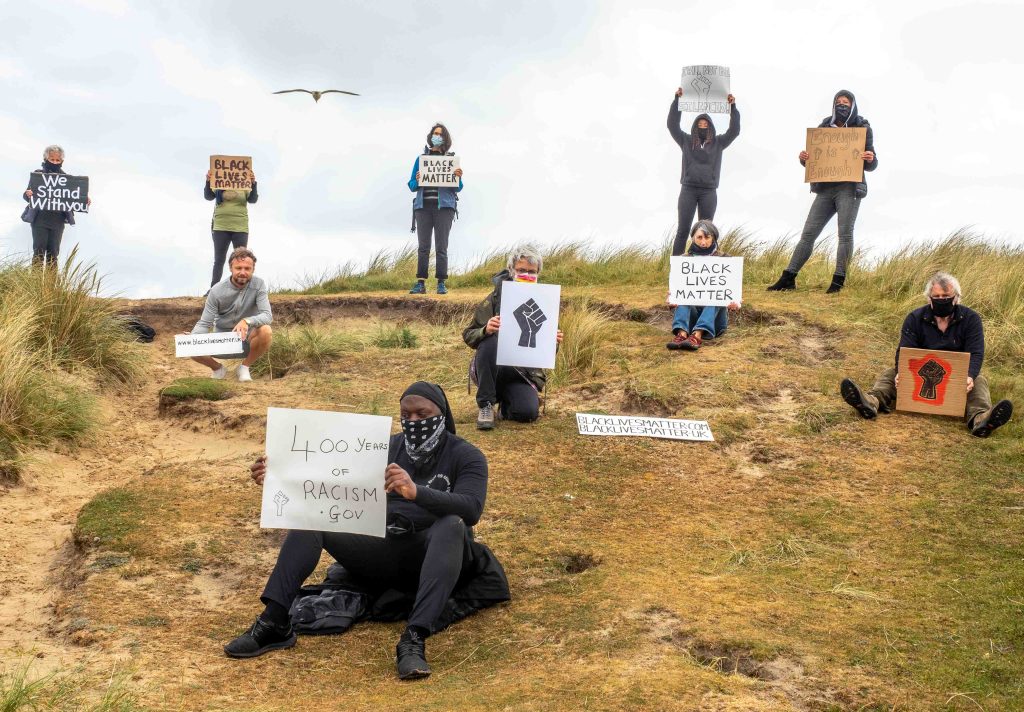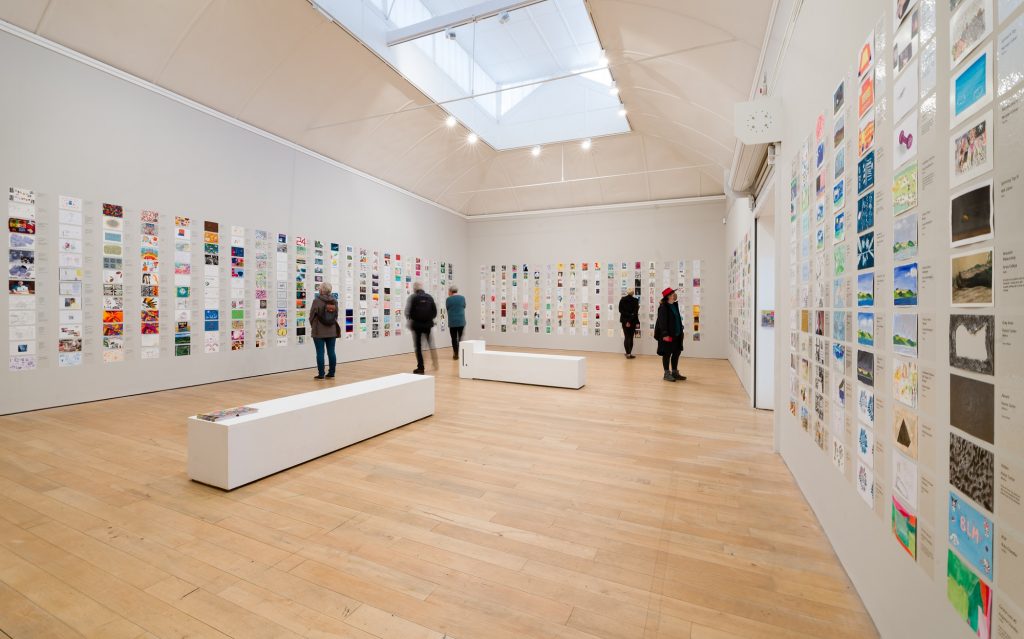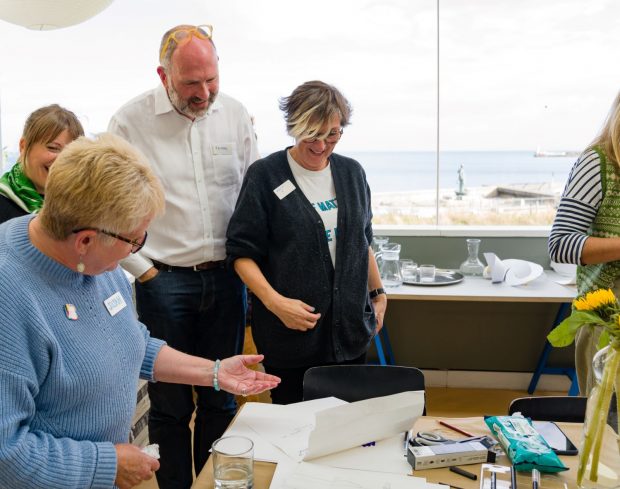ACCESS & EXCELLENCE
Since 2017, the gallery has undergone a phased transformation driven by the needs of the communities we aim to serve. A new clarity of purpose has emerged as we responded to national and international events, from Brexit to the pandemic, that particularly affected the most vulnerable in society.
We recognised that cultural organisations have often failed to be relevant to large sections of the population, with the most disadvantaged being the least well served. Structural issues are at the heart of the problem, and we understood that to attract more diverse audiences to engage with our work, we needed to invite them into the organisation to shape our programmes.
In response, we have offered support to communities in crisis, giving them agency to shape our programme. We have acted to strengthen well-being. We’ve enhanced young peoples’ life chances, intervening directly in schools. Over the pandemic, small, repeated acts of kindness became vital to our work.
In 2019 we successfully applied to join the Arts Council Collection National Partners Programme (ACCNPP), aiming to address a huge challenge the sector faced. We recognised that the community of curators shaping programmes in UK galleries fails to reflect the diversity of contemporary Britain. Curators are predominantly white, university-educated, and share a similar world view. Few are disabled or from lower socio-economic backgrounds. It is therefore not surprising that the audiences attracted to their programmes, reflect the same demographic.
Our programme explored how to create platforms for unheard voices in our communities, supporting them to curate main exhibitions drawing on the Collection.
In spite of the challenges of the pandemic, these communities have delivered nine ambitious and successful projects. We have supported school pupils at Newlyn School and Mounts Bay Academy; LGBTQIA+ young people in partnership with the Intercom Trust; a group referred through social prescribing networks; Black Voices Cornwall, and young dads, through charity WILD Young Parents.
In every case, participants had full curatorial control. Their shows resonated deeply with our audiences and across our organisation. Our first-time curators found the experience profound and life-enhancing. Many reported the project helped them to keep going, to overcome major life challenges, compounded by the pandemic.
As the gallery went into lockdown in March 2020, the team was galvanised into action to support our communities, near and far, in ways that have redefined our public role. We found new digital methods to maintain support for the most vulnerable, particularly those already isolated, before the pandemic struck such as older, isolated people through Tea, Cake & Art and young LGBTQIA+ people with Seen.
We made a stand on racism, supporting the emergence of Black Voices Cornwall, curating exhibition The Silence is Deafening and then the ACCNPP show Captured Beauty.
We found ways of supporting personal creativity, sending out 6,000 blank postcards to people, with the invitation to express their experiences in any media. Intended as a project to support hardly reached local communities, though partnering with mental health support groups, pupil referral units, homeless and foodbank charities, it quickly grew into an international project, with cards requested in Hong Kong, Taiwan, New York, and Norway. As the project grew, we invited participants to lend us their artworks to create an exhibition as the centrepiece of our autumn 2020 programme. 962 cards formed the exhibition Extraordinary Postcards For Extraordinary Times. On the back of these initiatives, our autumn visitor numbers broke records, with attendances 41% up on 2019 figures.
We have recognised a new way of working that deeply embeds the gallery in the life of our communities, offering a means of developing important, hyper-local impacts made possible through national partnerships. This shift has increased our standing amongst our peers, particularly through our partnership with Arts Council Collection and Plus Tate.
Driven by concerns over a diminishing creative curriculum in schools, we have worked strategically in schools, academy trusts, with arts education partners (Engage and through Plus Tate), and with funders, to advocate for creativity as a central part of every child’s education. Our Paul Hamlyn-funded teachers’ CPDL programme has led to more than 60 Arts Council Collection and Cornwall Council Schools Art Collection artworks being loaned to 10 schools on Scilly and across West Cornwall, inspiring Arts Council Collection to develop their national ‘Take-Two’ schools’ loans programme. Our work with the Truro Penwith Academy Trusts and their 29 schools has led to the appointment of a curriculum lead for art across the whole trust, and their new free school adopting a STEAM curriculum.
We have enhanced our track record on access. DisAbility Cornwall has helped us identify improvements to our already well-performing buildings. Staff have received training on subjects including hidden bias, LGBTQIA+ awareness, and dementia-friendly training.
In 2022, our bid to host a DASH Future Curator was successful, with the d/Deaf disabled curatorial internship planned for 2023-25.
Our workforce and governance have become more diverse as a result of our piloting of new recruitment approaches. We have openly shared our learning with peers, through Plus Tate, the ACC partnership, and the contributions staff make to sector conferences, boards, and networks.
OUR GOVERNANCE AND WORKFORCE ARE BECOMING MORE REPRESENTATIVE OF OUR COMMUNITIES.
10% of staff identify as part of the global majority (compared to 2% of the Cornwall population). People from lower socio-economic backgrounds and younger people are also now more strongly represented. D/deaf disabled people are less well represented, at 2% of our workforce, but through initiatives such as Future Curators, we have taken action to address this.
Our board, leadership, and wider staff/volunteer teams work effectively together within a collegiate culture. Our Mission, Vision and Values underpin all our work and were shaped through whole-team working and are owned and embraced by all. Our decision-making is increasingly data-driven; an approach we will expand in the coming years.
Equally, those we engage as audiences/participants are becoming more diverse.
- Since 2017, we have seen increases amongst four of the five least-engaged audience segments. IMD19 postcode analysis shows improving engagement trends with residents of the 20% most deprived wards (up from 11% to 18% of visitors – 16% of Cornish population).
- Visitor age profiles have moved too. In 2017, 15% of visitors were under 45yrs. By 2022, this increased to 40%. Global Majority audiences more than doubled, from 2% to 6% (Cornwall 2%).
- 8% of our audiences describe themselves as disabled compared to 21% in Cornwall. As with our workforce, more targeted work is required.
- While our in-gallery visitor totals fluctuated, we see in 2021/22 a return to pre-pandemic figures and our online user figure has more than doubled in five years to 58k.

